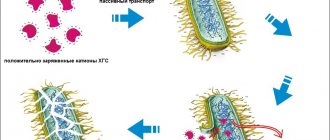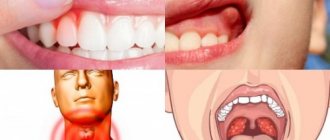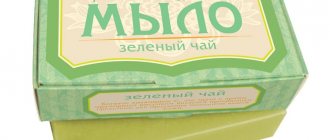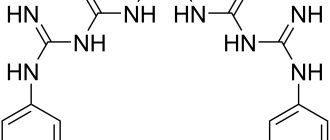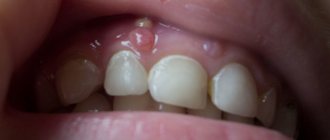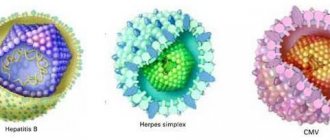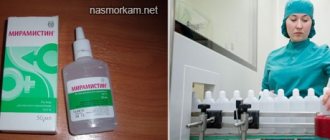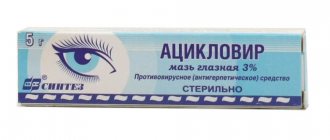Home › Treatment of herpes
Almost every modern medicine cabinet contains an inexpensive medicine called Chlorhexidine.
Most people use it instead of peroxide to disinfect wounds or disinfect hands, without fully understanding the full range of capabilities of the active substance that forms the drug.
For example, Chlorhexidine successfully copes with the manifestations of the herpes virus, replacing expensive antiviral drugs.
Let's see how it works.
Mechanism of action for herpesvirus
The mechanism of action of chlorhexidine on pathogenic cells lies in the ability of the chemicals in its composition to bind to phosphorus-containing groups on the surface of bacterial particles.
As a result, the balance of water and salt in the cell changes, and the membrane actively allows fluid to pass through. The latter causes the death of all components inside the structure, and the wall itself ruptures under the pressure of the liquid. This principle of influence of chlorhexidine is observed in a wide range of pathogens.
Which of them are susceptible to the effects of the drug?
- Treponema.
- Chlamydia.
- Ureaplasmosis.
- Gonorrhea.
- Gardenellosis.
- Bacteroides.
- Trichomoniasis.
- Herpes.
Indications for use for herpes on the lips
Let's focus on the herpes virus. Its varieties include rashes both on the lips and in the genital area. Therefore, chlorhexidine is used in both urology and gynecology. The herpes virus also appears in the form of unsightly blisters above the lip or in the corners of the mouth.
The powerful effect of the drug eliminates herpes cells, disrupting their metabolic processes. You can apply the medicine when a purulent formation appears under the dried crust of the wound. The antiseptic penetrates there and cleanses the affected area.
Chlorhexidine is applied 2-3 times a day to the affected areas. Applications are continued until symptoms disappear completely, 3-7 days. The main effect is noticeable already on the second day.
Description
Hexicon is an antiseptic substance whose active component is chlorhexidine bigluconate. The product is available in the form of ointments, vaginal suppositories and solution. Its action is based on penetration into the cell wall, after which the bacteria are destroyed. However, this drug is not effective against various infectious and fungal infections. Even with prolonged use of the product, addiction does not occur.
Auxiliary components promote deep penetration of the active substance, due to which bacteria die. The medicine does not in any way affect the vaginal microflora. The simultaneous use of tablets and suppositories is prohibited.
Indications for use of Hexicon:
- prevention of sexually transmitted diseases;
- prevention of possible consequences after surgery;
- disinfection of cuts and wounds;
- therapeutic therapy of infected mucous membranes;
- treatment of oral diseases.
Hexicon suppositories are recommended to be used 2 times a day, for 1-14 days. To reduce the likelihood of infection after accidental sexual contact, the medication must be used no later than 1.5 to 2 hours later. The medicine can be taken by both women and men. In the second case, it is necessary to dilute the solution and inject it into the urethral canal. The external genitalia should also be treated for preventive purposes.
Sometimes it is prescribed to take Betadine and Hexicon at the same time, because an iodine-based suppository helps eliminate infectious diseases. In the same complex, Terzhinan, an analogue of Hexicon, is often used. This is a combined type antiseptic that also helps destroy bacteria.
Betadine is an antiseptic drug, available in the form of vaginal suppositories, ointments and solutions, containing the active substance povidone-iodine. This active substance promotes the clotting of bacteria. The general course of treatment with the drug is from 7 to 12 days. When blood or pus is discharged from the vagina, the effectiveness of therapy is reduced.
Betadine is an analogue of Hexicon, has similar indications, it is also prescribed before surgery, for the treatment of wounds, bedsores, and diabetic foot. The drug is contraindicated in late pregnancy, as well as during breastfeeding. Because iodine has the ability to penetrate into milk.
Contraindications and restrictions
Chlorhexidine is a gentle drug, but there are some restrictions on its use:
- allergic reactions and hypersensitivity to some components of the drug or the main active ingredient;
- age up to 5 years;
- Wounds should not be treated if the eardrum is damaged, open-type traumatic brain injuries and spinal injuries with spinal cord damage;
- During pregnancy and lactation, be sure to consult a doctor before taking it.
What is the drug?
Chlorhexidine, containing the active component chlorhexidine bigluconate, affects harmful herpes viruses and microbes. Not absorbed into the blood.
The medication is indicated for external use for rashes of viral and bacterial origin. It eliminates signs of the virus well, providing a long-lasting antimicrobial effect. The drug does not cause irritation and quickly clears the affected areas of herpes infection. Although, side effects are possible.
Chlorhexidine is a rather aggressive drug. If the condition of the skin or general health deteriorates significantly, you should discontinue use and consult a doctor. But, according to buyers, this is an effective medicine. In a matter of days, it relieves inflammation, disinfects and dries out ulcers and blisters, preventing the emergence of new foci of infection and suppuration of the affected areas.
Features of application
If you are using chlorhexidine liquid as a mouth rinse, dilute the substance to 0.5 concentration. For children – up to 0.1-0.2%. The ideal dilution option is warm distilled water with a small amount of ethanol.
Use alcohol, glycerin or distilled water for dilution. To treat deep wounds and burns, use a sterile solution. Chlorhexidine is also incompatible with soap. Therefore, it is not recommended to wash the treated areas with soap solutions or shampoos during the day.
Have you ever been tested for herpes?
Not really
What is the difference?
Gynecological preparations from the group of local antiseptics Hexicon and Betadine differ in a number of parameters:
- The active component of Hexicon (instructions) is the antimicrobial substance chlorhexidine
. The release form is represented by suppositories, vaginal tablets and solution. The concentration of chlorhexidine in suppositories is different: 8 or 16 mg per suppository. The tablets contain a maximum amount of medication - 16 mg. The drug is produced in Russia. - The active ingredient of Betadine is povidone-iodine
(instructions). The product is produced in Hungary. Produced in the form of a solution, suppositories and ointments.
The scope of application of both gynecological products is the same. Active components inhibit the growth and reproduction of bacteria, fungi, viruses, and protozoa. However, chlorhexidine exhibits proven activity against chlamydia and mycoplasma, the most common causative agents of sexually transmitted infections. Povidone-iodine, in turn, is more effective against cocci, rods and fungi.
Hexicon and Betadine must not be used together.
Conditions and shelf life
The date of manufacture and expiration date are indicated on the packaging. Storage conditions must be observed, otherwise the service life may be reduced. Chlorhexidine is stored in a dark place at a temperature not exceeding 25 degrees Celsius.
Similar articles:
- Clotrimazole for herpes
- Instructions for use of Erazaban for herpes
- Instructions for use of the drug Famvir
- Likopid: composition, indications, instructions for use
Great article 0
Herpes and Chlorhexidine
Herpes is a disease of viral origin that affects the skin and mucous membranes, most often on the lips, face or genitals.
"Chlorhexidine" for herpes is one of the effective drugs that help quickly eliminate the signs of the disease.
Thanks to the antiseptic properties of the medicine, it is possible to destroy the cause of the disease - a virus that contributes to the occurrence of inflammation on the skin, which not only spoils the appearance, but also provokes pain.
The principle of action of "Chlorgesidine" for herpes
The main active ingredient of the drug is chlorhesidine bigluconate, which kills harmful microorganisms, but is not absorbed into the blood.
If you treat the surface of the skin with rashes with the medication, a certain amount of Chlorgesidine will remain on it for some time, which provides a long-lasting antimicrobial effect. The drug remains active in the presence of bleeding or suppuration.
Using the medicine, you can clean the area affected by herpes, but not damage the wound or cause additional irritation.
If after applying the product there is an adverse reaction and deterioration in the condition of the skin, you should consult a doctor and stop using the medication. The product helps dry out ulcers.
“Chlorhexidine” for herpes is considered an effective drug, but a positive effect can be achieved if the area of skin with inflammation is not extensive.
For a small area affected, this medicine will be useful. With its help, you can not only disinfect the skin, but also dry out herpes blisters.
The product helps prevent re-infection of the inflamed skin and the appearance of suppuration.
Recommended dosage form for the treatment of herpes
Chlorhexidine has several release options, in which the drug can be found in pharmacies. A common form is considered to be a solution that is sold in bottles, often with a dispenser for more convenient use.
To treat herpes, you can choose this option, however, to eliminate inflammation on the lips, it is recommended to purchase “Chlorhexidine” in the form of a gel.
In this situation, the drug will not flow after application, so you will not need to worry about the drug spreading from the area of the skin that needs to be treated.
"Chlorhexidine" for rashes on the lips
The drug is a powerful antiseptic that destroys pathogenic bacteria in the skin cells. Therefore, it can be used for herpes on the lips. It is useful to apply Chlorhexidine when suppuration forms under crusts to disinfect wounds.
You may not be afraid of slight bleeding in the affected area - this is not considered a contraindication and a reason for refusing to use the medicine. Chlorhexidine should be applied to the lips in the mornings and evenings; in case of urgent need, up to 3 procedures per day can be performed.
Be sure to evenly distribute the medicine in 1 layer on the affected area. The effect will be visually noticeable within a day after application.
For genital herpes
For intimate hygiene, it is necessary to use products that do not destroy the vaginal microflora.
The use of "Chlorhexidine" allows you to quickly eliminate pain and destroy pathogenic microorganisms on the skin and mucous membranes of genital herpes.
To cure rashes, you need to apply 10 ml of solution to the inflamed area and wait a few minutes. It is recommended to use the drug 3 times a day: in the morning, in the afternoon (after lunch) and at night.
When applying the drug in the labia area, it is recommended to adhere to the following precautions:
- Chlorhexidine should not be used for genital herpes together with alkaline agents.
- It is strictly not recommended to use soap. The drug is effective only in the presence of a neutral environment.
- To increase the disinfecting properties of the liquid, it can be used in soft water with the addition of ethanol, which will enhance the antiviral effect of the drug.
- Chlorhexidine should be stored in a dry, dark place that children will not have access to. The temperature should not reach above 25 °C.
- You cannot use expired medication for treatment. It is important to ensure that Chlorhexidine does not expire.
Contraindications
The use of Chlorhexidine is contraindicated in cases of individual intolerance to the active substance.
Also, hypersensitivity, a tendency to allergies or skin diseases (dermatitis) are reasons for refusing to use the medication.
In such situations, it is recommended to consult a doctor who will prescribe a medicine appropriate to the patient’s condition that eliminates herpes.
Source: https://EtoHerpes.ru/terapiya/narodnoe/hlorgeksidin-pri-gerpese.html
